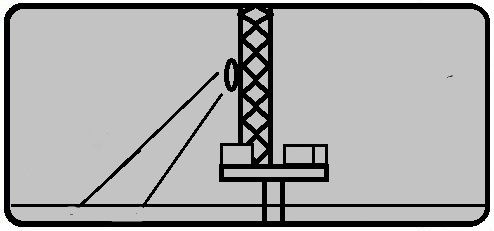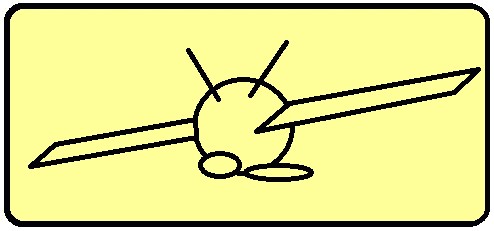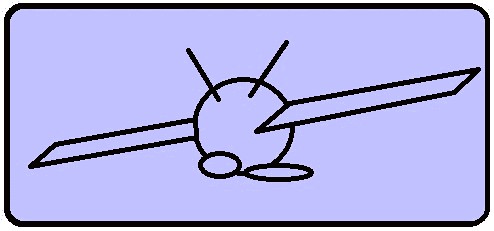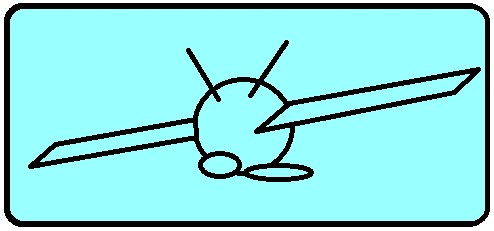|
Size: 1072
Comment:
|
Size: 3980
Comment:
|
| Deletions are marked like this. | Additions are marked like this. |
| Line 1: | Line 1: |
| #acl MartinGade:read,write,delete,revert | ## page was renamed from FEW3O #acl MartinGade:read,write,delete,revert KFEW3OGroup:read,write All:read |
| Line 3: | Line 4: |
| #language de = KFEW³O at IfM = KFEW³O stands for '''K'''üsten-'''FE'''rnerkundung und '''W'''echsel'''W'''irkungen an der '''W'''asser'''O'''berfläche (Coastal Remote sensing and Air-Water Interactions). We perform systematic analyses of satellite imagery, particularly of synthetic aperture radar (SAR) imagery of coastal regions, field campaigns involving measurements of the radar backscattering from the sea surface, and lab experiments in the University's wind-wave tank. |
|
| Line 4: | Line 8: |
| Dieses ist die Wiki-Seite der FEW³O-Gruppe am IfM. | <<TableOfContents()>> |
| Line 6: | Line 10: |
| FEW³O steht für Fernerkundung von Wechselwirkungen an der Wasseroberfläche. Teilnehmer der Gruppe beschäftigen sich mit Messungen von (Gas-) Austauschprozessen im Labor (Windwellenkanal), mit Feldmessungen der Radarrückstreuung von der Meeresoberfläche oder mit der systematischen Analyse von Satellitenbildern, vor allem von küstennahen Seegebieten. | ---- == Wind-Wave Tank == The University's wind-wave tank was built in the early 1970s and is located at the Federal Institute of Waterways Engineering in Hamburg-Rissen. We have been performing measurements of wave damping by monomolecular surface films, of the radar backscattering from the water surface, and of exchange processes across the water-air interface. The wind-wave tank is also used for educational purposes such as practical courses and BSc-/MSc studies. |
| Line 8: | Line 14: |
| === Windwellenkanal === Der Windwellenkanal der Uni Hamburg befindet sich auf dem Gelände der Bundesanstalt für Wasserbau, Außenstelle Küste, in Hamburg-Rissen. |
. [[KFEW3O/WWK|{{attachment:WWK_gr.jpg|KFEW3O/WWK|height="50"}}]] To the wind-wave tank's Wiki pages [[KFEW3O/WWK|this way]]. |
| Line 11: | Line 16: |
| ---- == Scatterometer == Systematic measurements of the radar backscattering from the sea surface and their analyses contribute to a better understanding of backscattering mechanisms in general and to the development of methods to derive oceanic and atmospheric parameters from such measurements. Lab experiments deploying a scatterometer were performed from the 1980s, and in the 1990s field campaigns were performed in the German Bight of the North Sea, deploying a scatterometer from board a helicopter and from a radar tower, allowing measurements at 5 frequency bands and at 4 polarization combinations. |
|
| Line 12: | Line 20: |
| . [[KFEW3O/FINO2Multi3Scat|{{attachment:FINO_gr.jpg|KFEW3O/FINO2Multi3Scat|height="50"}}]] To the wiki pages of tower-based scatterometer measurements [[KFEW3O/FINO2Multi3Scat|this way]]. | |
| Line 13: | Line 22: |
| Weitere Informationen gibt es auf der [[http://www.ifm.zmaw.de/~wwwrs/WWK/UHH_WWK_main.html|WWK-Homepage]]. | ---- == Satellite Imagery == We are regularly analysing satellite images, particularly those acquired by synthetic aperture radar (SAR) sensors. These high-resolution active microwave sensors are used to derive hydrodynamic processes from sea surface roughness variations that manifest in spatial variations of the SAR image intensity. This is done, e.g., to identify different marine surface films or to help classifying different sediment types on exposed intertidal flats. |
| Line 15: | Line 26: |
| . [[KFEW3O/SARWatt|{{attachment:Sat_yel.jpg|KFEW3O/SARWatt|height="50"}}]] To the wiki pages of SAR analyses of exposed intertidal flats [[KFEW3O/SARWatt|this way]]. | |
| Line 16: | Line 28: |
| SAR images are already being used for the operational oil-spill monitoring. These images are used for comprehensive statistical analyses that allow, e.g., an assessment of the mean oil pollution of dedicated coastal regions and its seasonal variability. Such analyses were recently done for Indonesian coastal waters. | |
| Line 17: | Line 30: |
| === Forschungsplattform FINO2 === Seit Juli 2008 finden auf der Forschungsplattform FINO2 in der Westlichen Ostsee systematische Messungen der Radarrückstreuung von der Wasseroberfläche statt. |
. [[IndoNACE|{{attachment:Sat_li.jpg|IndoNACE|height="50"}}]] To the wiki pages of the '''statistical analyses''' of oil pollution based on SAR imagery [[IndoNACE|this way]]. |
| Line 20: | Line 32: |
| SAR images, along with data acquired by other sensors, can be used to detect submesoscale and mesoscale turbulent processes at the water surface and to identify their spatio-temporal variation. Collaborative studies have been performed together with colleagues from the University's Department of Informatics, from Moscow and Ufa, Russia, and from Liège, Belgium. | |
| Line 21: | Line 34: |
| . [[KFEW3O/SAREddies|{{attachment:Sat_tur.jpg|KFEW3O/SAREddies|height="50"}}]] To the wiki pages of the analyses of '''submeso- and mesoscale phenomena''' using SAR data [[KFEW3O/SAREddies|this way]]. | |
| Line 22: | Line 36: |
| Einige INformationen zu FINO2 findet man [[http://www.fino2.de|hier]]. | ---- == Miscellaneous, Internal Pages == . [[KFEW3O/KFEW3O_intern|{{attachment:intern_r.jpg|KFEW3O/KFEW3O_intern|height="50"}}]] ...to the Internal FEW³O pages [[KFEW3O/KFEW3O_intern|this way]]. |
| Line 24: | Line 40: |
=== Satellitenbilder === |
---- |
KFEW³O at IfM
KFEW³O stands for Küsten-FErnerkundung und WechselWirkungen an der WasserOberfläche (Coastal Remote sensing and Air-Water Interactions). We perform systematic analyses of satellite imagery, particularly of synthetic aperture radar (SAR) imagery of coastal regions, field campaigns involving measurements of the radar backscattering from the sea surface, and lab experiments in the University's wind-wave tank.
Wind-Wave Tank
The University's wind-wave tank was built in the early 1970s and is located at the Federal Institute of Waterways Engineering in Hamburg-Rissen. We have been performing measurements of wave damping by monomolecular surface films, of the radar backscattering from the water surface, and of exchange processes across the water-air interface. The wind-wave tank is also used for educational purposes such as practical courses and BSc-/MSc studies.
 To the wind-wave tank's Wiki pages this way.
To the wind-wave tank's Wiki pages this way.
Scatterometer
Systematic measurements of the radar backscattering from the sea surface and their analyses contribute to a better understanding of backscattering mechanisms in general and to the development of methods to derive oceanic and atmospheric parameters from such measurements. Lab experiments deploying a scatterometer were performed from the 1980s, and in the 1990s field campaigns were performed in the German Bight of the North Sea, deploying a scatterometer from board a helicopter and from a radar tower, allowing measurements at 5 frequency bands and at 4 polarization combinations.
 To the wiki pages of tower-based scatterometer measurements this way.
To the wiki pages of tower-based scatterometer measurements this way.
Satellite Imagery
We are regularly analysing satellite images, particularly those acquired by synthetic aperture radar (SAR) sensors. These high-resolution active microwave sensors are used to derive hydrodynamic processes from sea surface roughness variations that manifest in spatial variations of the SAR image intensity. This is done, e.g., to identify different marine surface films or to help classifying different sediment types on exposed intertidal flats.
 To the wiki pages of SAR analyses of exposed intertidal flats this way.
To the wiki pages of SAR analyses of exposed intertidal flats this way.
SAR images are already being used for the operational oil-spill monitoring. These images are used for comprehensive statistical analyses that allow, e.g., an assessment of the mean oil pollution of dedicated coastal regions and its seasonal variability. Such analyses were recently done for Indonesian coastal waters.
 To the wiki pages of the statistical analyses of oil pollution based on SAR imagery this way.
To the wiki pages of the statistical analyses of oil pollution based on SAR imagery this way.
SAR images, along with data acquired by other sensors, can be used to detect submesoscale and mesoscale turbulent processes at the water surface and to identify their spatio-temporal variation. Collaborative studies have been performed together with colleagues from the University's Department of Informatics, from Moscow and Ufa, Russia, and from Liège, Belgium.
 To the wiki pages of the analyses of submeso- and mesoscale phenomena using SAR data this way.
To the wiki pages of the analyses of submeso- and mesoscale phenomena using SAR data this way.
Miscellaneous, Internal Pages
 ...to the Internal FEW³O pages this way.
...to the Internal FEW³O pages this way.
